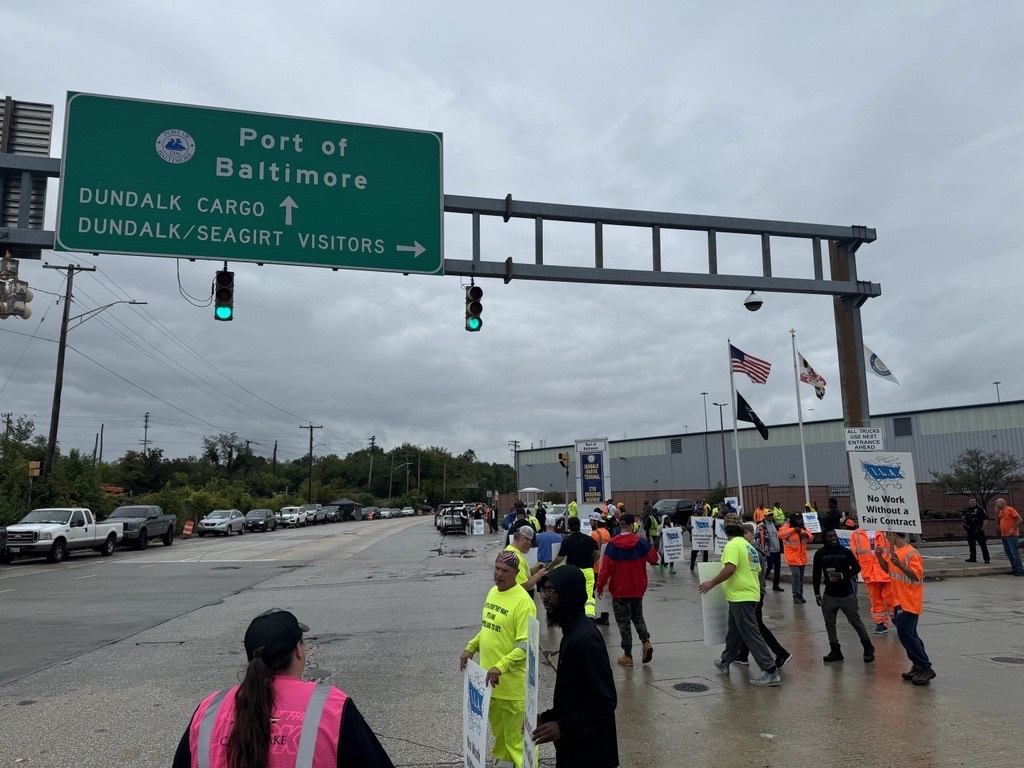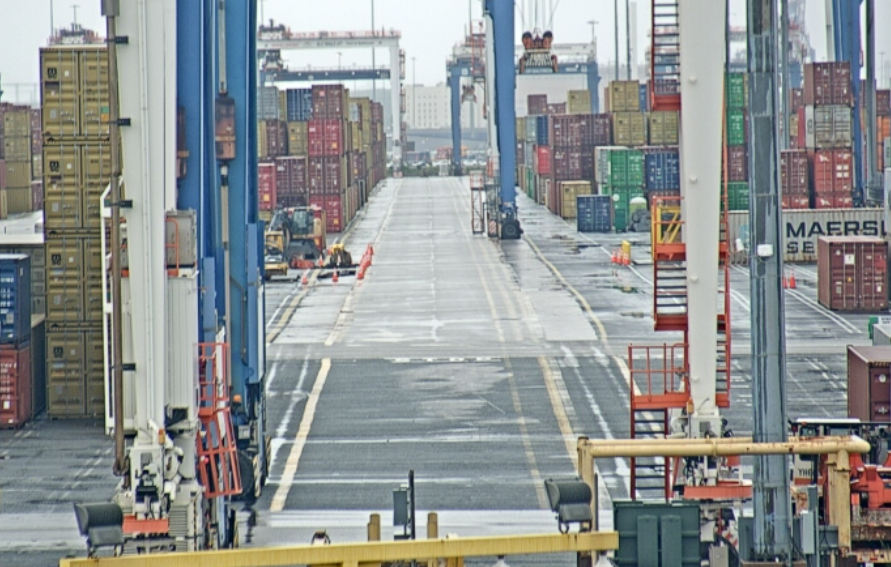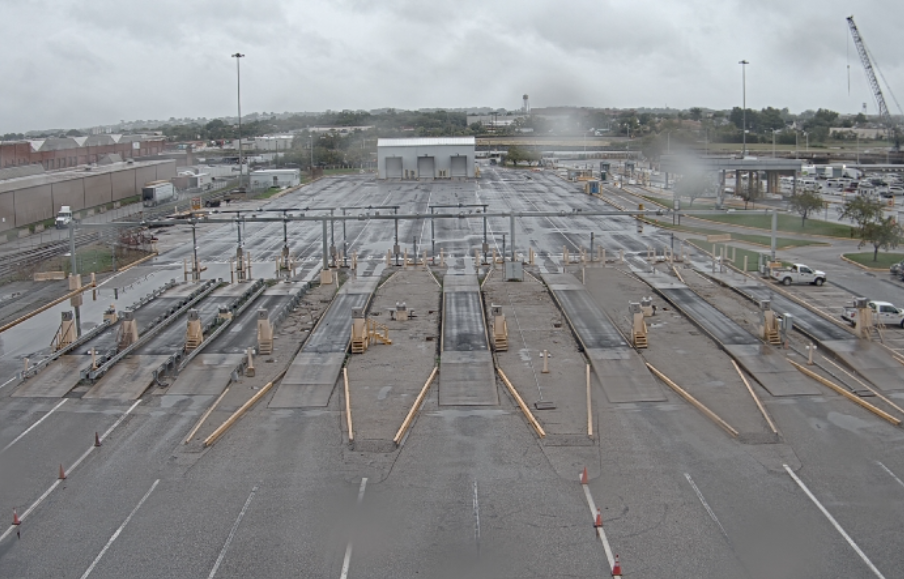Thousands of longshoremen went on strike beginning Tuesday, slowing Chesapeake Bay region’s two busy commercial ports down and putting the East Coast supply chain at risk.
Beginning at 12:01 a.m. on Oct. 1, the International Longshoremen’s Association (ILA) began picketing at ports from Maine to Texas, including the ports of Baltimore and Virginia.
By Wednesday, Oct. 2, U.S. Acting Labor Secretary Julie Su called for both sides to find a solution: “The parties need to get back to the negotiating table, and that must begin with these giant shipping magnates acknowledging that if they can make record profits, their workers should share in that economic success,” she said.
The ILA is at odds with the United States Maritime Alliance (USMX), which represents employers at ports on the Atlantic and Gulf coasts. The ILA rejected USMX’s final proposal, made before the Sept. 30 deadline, triggering the worker strike. It’s the first coastwide strike by longshoremen in almost 50 years.

The ILA was demanding a 50 percent increase in pay for its longshoremen. They argue that “greedy foreign companies” are making billion-dollar profits at American ports as port productivity continues to expand… but longshoremen aren’t seeing any share of that growth.
“USMX brought on this strike when they decided to hold firm to foreign-owned Ocean Carriers earning billion-dollar profits at United States ports, but not compensate the American ILA longshore workers who perform the labor that brings them their wealth,” said President Harold Daggett, the leader of the 85,000-member ILA union.
What USMX is offering and what ILA is demanding are far apart. USMX said in a statement that its most recent offer was strong and would “increase wages by nearly 50 percent, triple employer contributions to employee retirement plans, strengthen our health care options, and retain the current language around
automation and semi-automation.”
In a statement Oct. 1, USMX called the strike “completely avoidable” and said, “We look forward to hearing from the Union about how we can return to the table and actually bargain, which is the only way to reach a resolution.”
But ILA says USMX’s last offer “fell far short” of the wages and protections it has been asking for.


And union leaders say workers will strike for as long as it takes. “We are prepared to fight as long as necessary, to stay out on strike for whatever period of time it takes, to get the wages and protections against automation our ILA members deserve,” said Daggett.
The Port of Baltimore says it will respect the union’s right to strike, but begs both sides of the conflict to come to a quick resolution. In a statement, the port says, “We continue to implore both sides to come together and negotiate an agreement that properly compensates the men and women of the ILA while maintaining cost effective and efficient cargo flows… The port industry is one of our nation’s leading job generators and is critically important to our national supply chain. We remain hopeful that an agreement will be reached very soon.”
Meanwhile at seven locations around the Port of Virginia in Norfolk, operations are shut down until an agreement is reached. They include some of the port’s largest operators: Norfolk International Terminals, Virginia International Gateway, and Newport News Marine Terminal. Cargo operations will be impacted as far away as Richmond Marine Terminal and Virginia Inland Port, more than 200 miles northwest.
Port leaders in Virginia echo Baltimore’s hope for the two sides to come together quickly: “Our hope is for a speedy resolution that allows The Port of Virginia to implement its resumption of operations plan to methodically and safely bring terminals back online,” the Virginia port said in a statement.
Both states will undoubtedly begin to see a growing impact the longer the strike goes on. The Port of Baltimore’s 2023 economic impact report found that state-owned and private marine terminals at the port handled 55.5 million tons for U.S. importers and exporters. The port supports 20,193 direct jobs (jobs that would stop with a closure of the port), including the striking ILA workers and also the terminal operators, stevedores, trucking firms, railroads, warehouse workers, Maryland pilots, and others. About 60 percent live in Baltimore City and Baltimore County.
The strike comes only a handful of months after the Key Bridge collapse halted large-scale shipping in and out of the Port of Baltimore, as Unified Command and its partners worked around the clock to remove tons of steel bridge debris and the M/V Dali itself. It took just shy of 2.5 months to clear the channel to the largest ships that call on Baltimore.
In a recent lawsuit against the owners of the Singapore-flagged ship that destroyed the bridge, the Maryland Attorney General asks for damages for the loss of the shipping channel and “disruption of most maritime activity in the public and private terminal of the Port.”
At the Port of Virginia, the economic impact of an ongoing strike would hit both state and local revenue and put a large number of jobs at risk. The Virginia ports support a staggering 565,063 jobs, according to a 2022 economic impact report. That represents 11 percent of the total employment in Virginia.
How long operations will be interrupted remains to be seen. But for now, longshoremen will not be blocked from picketing at East Coast ports. The Port of Baltimore says, “In the meantime, the Maryland Port Administration will continue working with the ILA to ensure their members can peacefully gather outside of our marine terminals.”




